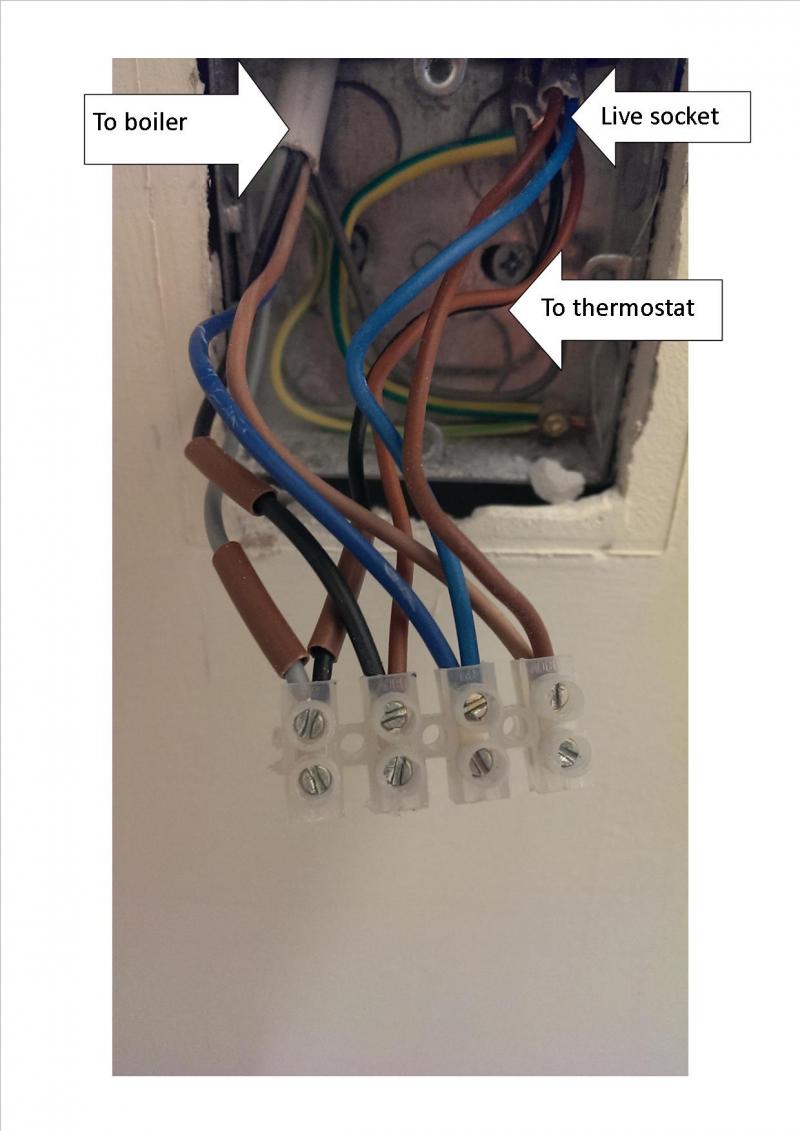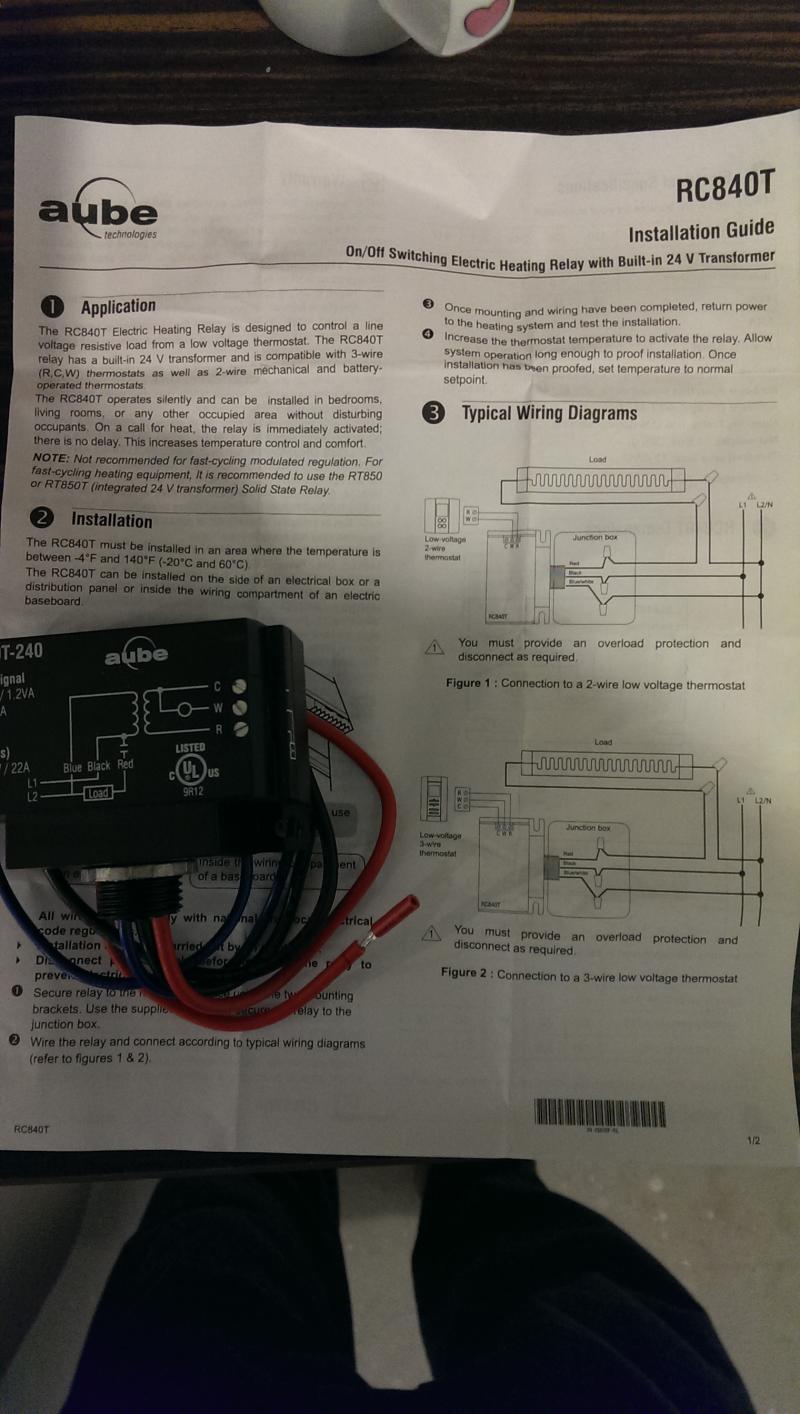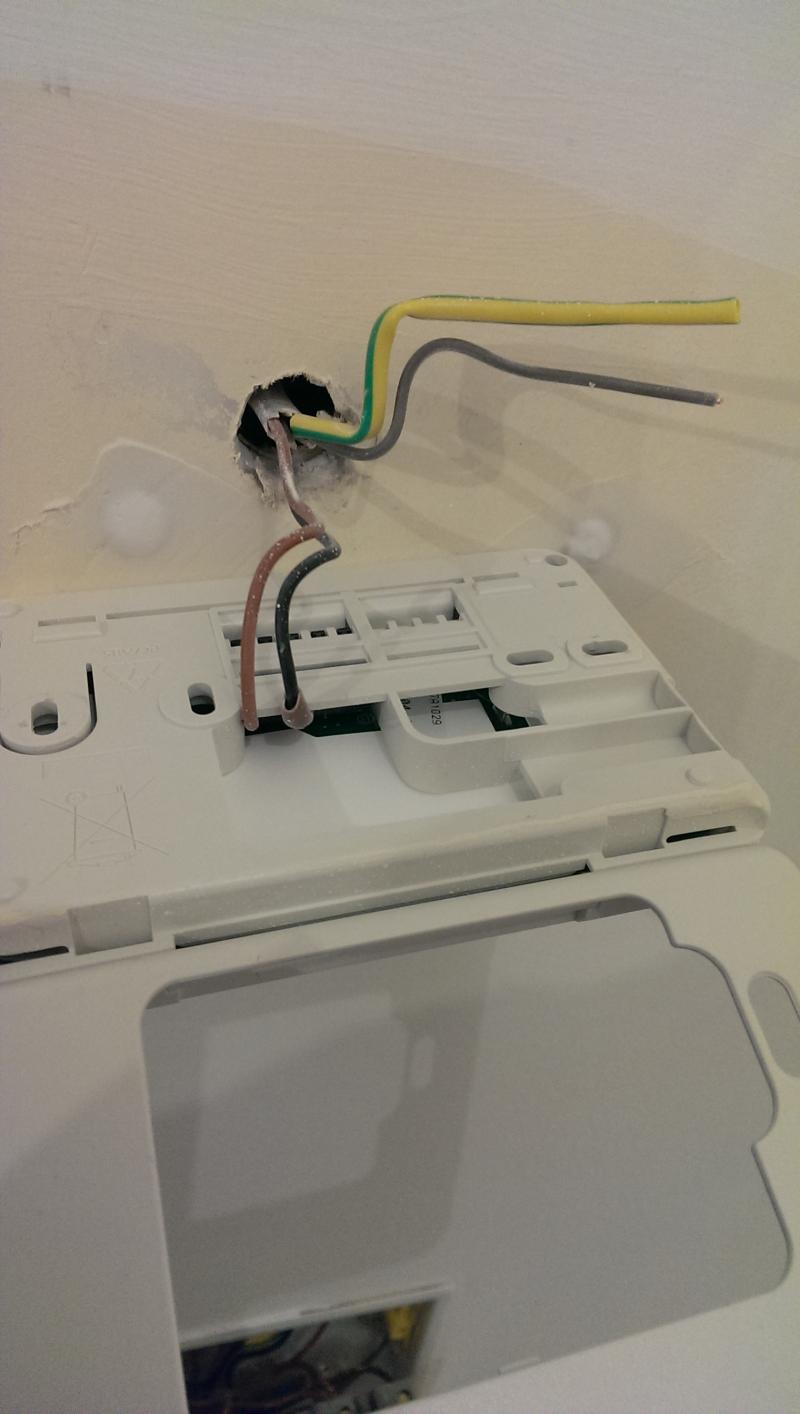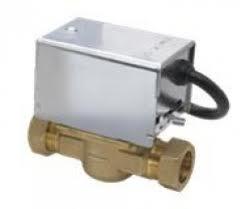Hi All,
New home owner here needing a little bit of advice please.
i Have a new property with a 230V Honeywell 2 wire thermostat. I intend to fit a 24V "nest" thermostat which can also run the 2 wires.
I have a honeywell "aube" to step the 230V down to 24V. I have located the junction box for my boiler, Power switch and thermostat all on a chock block.
Can someone please have a look at my pics. how would i wire in this relay. The thermostat i think i can work out just not the relay. Any help is great.
I think i can just swap and add in to the chock block but unsure which way. thanks
New home owner here needing a little bit of advice please.
i Have a new property with a 230V Honeywell 2 wire thermostat. I intend to fit a 24V "nest" thermostat which can also run the 2 wires.
I have a honeywell "aube" to step the 230V down to 24V. I have located the junction box for my boiler, Power switch and thermostat all on a chock block.
Can someone please have a look at my pics. how would i wire in this relay. The thermostat i think i can work out just not the relay. Any help is great.
I think i can just swap and add in to the chock block but unsure which way. thanks






